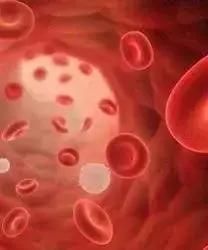Article
Ruxolitinib Displays Variable Pharmacokinetics in Patients with GVHD 2 Years of Age and Under
Author(s):
A study did not find a correlation between the pharmacokinetics and pharmacodynamics of ruxolitinib for the treatment of patients 2 years of age and younger with graft-vs-host disease.
Graft-Vs-Host Disease

A study did not find a correlation between the pharmacokinetics (PK) and pharmacodynamics (PD) of ruxolitinib (Jakafi) for the treatment of patients 2 years of age and younger with graft-vs-host disease (GVHD), according to findings presented at the 2023 Transplantation & Cellular Therapy Meetings.
There was significant variability between patients studied in terms of PK and drug exposure, further challenging efforts to find optimal dosing strategies for ruxolitinib in infants.
“With small sample size and variability, we did not identify clear correlation between ruxolitinib PK and PD,” the investigators stated in their poster.
Ruxolitinib is a Janus kinase inhibitor of JAK1 and JAK2 approved by the FDA to treat both acute and chronic GVHD in patients who are at least 12 years old.2 It has been studied in pediatric patients with acute steroid-refractory GVHD at a starting dose of 5 mg twice daily for patients of at least 25 kg and 2.5 mg twice daily for patients below 25 kg, with an overall response rate (ORR) of 45% and a high rate of grade 3 and 4 adverse events, which were reversible.3
The goal of a study from Cincinnati Children’s Hospital Medical Center was to determine the PK in children aged 2 or younger with acute or chronic GVHD using a novel end point of phosphorylated STAT3 on T lymphocytes 2 hours after ruxolitinib administration.
Four patients were enrolled, 2 who were already receiving ruxolitinib for chronic GVHD and 2 with new-onset steroid-refractory acute GVHD.1 All had received prior steroids, and other prior therapies included basiliximab (Simulect), infliximab (Remicade), and alemtuzumab (Lemtrada). One patient had gastrointestinal-related GVHD, whereas the others had skin involvement.
One patient received a dose of 5 mg twice daily, 2 received 2.5 mg twice daily, and 1 received 1.25 mg 3 times a day. For the patients with chronic GVHD, PK samples were taken at baseline and 2 hours after administration of the drug. For those with acute GVHD, samples were taken at baseline, 3 hours after administration, and 6 hours after administration.
Plasma drug concentration was measured by liquid chromatography tandem mass spectroscopy with a dynamic range of 1 ng/mL to 100 ng/mL. pSTAT3 expression on CD4+ and CD8+ T cells at peak drug levels were measured by flow cytometry. Responses were assessed at 28 days for acute GVHD and 6 months for chronic GVHD.
Both patients with chronic GVHD had a complete response (CR) at 6 months, whereas neither patient with acute GVHD had a response at 28 days. The patients with CRs were shown to have a reduction in pSTAT3 2 hours after dosing, whereas an increase or no change in pSTAT3 was seen in the patients with no response. pSTAT3 expression on CD8+ T cells with IFN-γ and IL-2 stimulation were most correlated with clinical response.
Ruxolitinib exposure was predicted based on adult patient data adapted to a pediatric model. However, the measured ruxolitinib concentration was lower than predicted, particularly in the 2 patients with chronic GVHD. Investigators hypothesized that this was related to rapid drug elimination.
One of the patients with chronic GVHD had grade 1 neutropenia and the other had no adverse events. One of the patients with acute GVHD had grade 4 thrombocytopenia and the other had grade 3 thrombocytopenia and bacteremia.
Overall, the low sample size and the variability of observed outcomes with ruxolitinib did not provide sufficient PK and PD data for this patient population.
“Further studies with larger sample sizes are needed to better understand ruxolitinib PK and PD in young children,” the investigators concluded in their poster.
References
- Galleta TJ, Dong M, Vinks AA, et al. Children under 2 years old treated with ruxolitinib for acute and chronic graft-versus-host-disease demonstrate variable pharmacokinetics. Presented at: 2023 Transplantation & Cellular Therapy Meetings; Orlando, FL; February 15-19, 2023. Poster 356.
- Jakafi. Prescribing information. Incyte; 2023. Accessed February 17, 2023. https://bit.ly/3YToHzY
- Khandelwal P, Teusink-Cross A, Davies SM, et al. Ruxolitinib as salvage therapy in steroid-refractory acute graft-versus-host disease in pediatric hematopoietic stem cell transplant patients. Biol Blood Marrow Transplant. 2017;23(7):1122-1127. doi:10.1016/j.bbmt.2017.03.029









